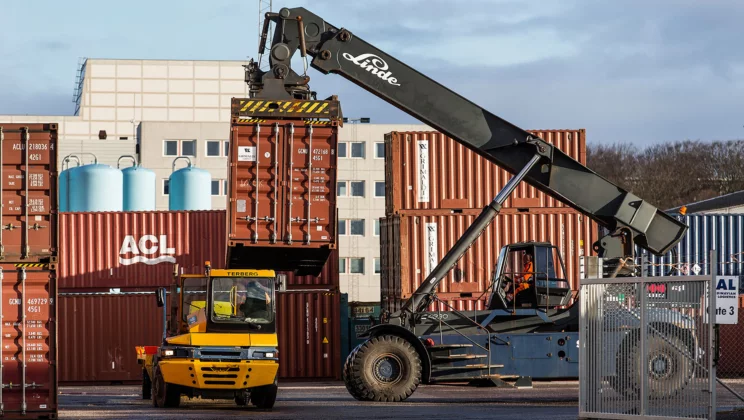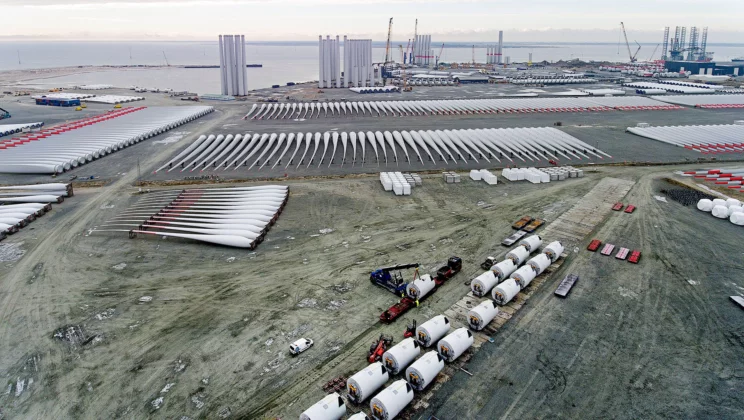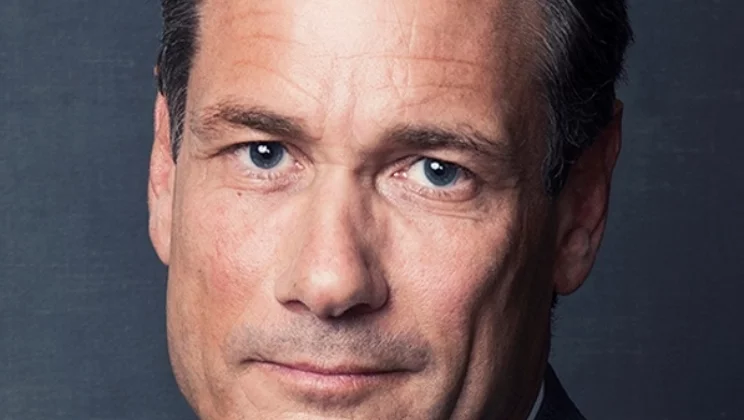The shipping industry is investing billions in digitisation, and according to a global expert, major changes will occur within a few years. The Port of Esbjerg is also ready for the transformation.
”The rate of investment in digital solutions for shipping and logistics has soared within a short space of time. The time is ripe now,” says Ulrik Sanders.
He is a senior partner and managing director with the consulting firm BCG in Copenhagen and global manager of the firm’s shipping activities. He has been working in the fields of transportation and logistics since he joined BCG in 2005.
According to Ulrik Sanders, the shipping industry is generally digitally immature compared to other industries. The technology and media business took a giant leap forward 10 years ago, but things are now taking off in the shipping industry. Investments of 3.3 billion dollars have been made in digital shipping and logistics solutions in the last six years.
Within logistics and transportation alone, 700 start-ups have been created on the basis of good ideas, and many of them are digitally based.
”Obviously, many of them will not make it, but some of them will. And they pose a threat to established firms. This partly explains the current propensity to invest,” says Ulrik Sanders.

The digitisation of the shipping industry will also have an impact at the Port of Esbjerg. This is partly because container capacity can be utilised far better so that fewer containers leave ports empty. The potential will be even greater in the years to come, believes Ulrik Sanders, senior partner and managing director of BCG.
Both internal and external changes
Concepts such as automation, analytics, blockchain and ventures will contribute to a dramatic shift in the shipping industry within a few years. According to Ulrik Sanders, developments will take two directions.
"We will see internal optimisation where big data is used for everything from advanced pricing to development of new digital tools to optimise the corporate processes. And entirely new marketplaces will emerge as a result of the external part such as the company Flexport, which transports goods around the world by air, sea, rail and road, based on a digital platform," he says.
Ulrik Sanders believes that many of the new start-ups can gain market shares from traditional companies. So they have to move fast or make acquisitions.
”Many of the small start-ups have not had any fundamental impact yet, but they will. Whether it will be in two or five years’ time is hard to say, but it will happen,” he says.
Container xChange pushing the trend
BCG has taken a lead role itself. In September 2014, it launched Container xChange, which is an example of how digitisation can transform the shipping industry. Many of BCG’s customers were experiencing logistical difficulties in having containers in e.g. Hamburg and no goods to put in them. At the same time, they might have goods in Shanghai that needed to go to Europe. It costs 500 dollars per container to send them to the other side of the globe without cargo. With the digital xChange platform, containers are now being ’interchanged’, enabling companies to coordinate internationally.
Today, the marketplace includes around a third of the global container ship capacity, saving billions of kroner. But needless to say, the potential is even greater.
“It did not take us long to build the technology, but it is hard to get people to change the way they do things. It takes time, because doing things the way they always have is deeply rooted in them,” says Ulrik Sanders.
Sharing economy in the container shipping industry
BCG’s experience with the xChange marketplace shows that it is highly demanding for companies to achieve the full savings. Clear specification of responsibilities is required while working pro-actively to find as many solutions as possible. The best results are achieved by defining KPIs and clear targets.
xChange is based on the concept of the sharing economy and seeks to implement some of those principles in the container shipping industry. And, according to Ulrik Sanders, thinking out of the box and seeing the bigger picture are necessary if the industry is to increase its profits.
”Much will be gained by large companies joining forces. It is for the good of everyone,” he says.

The trend in the shipping industry will also affect the wind turbine industry, where digitisation, RoRo solutions and transshipment of goods from road to sea are already producing structural changes in logistics planning methods.
Greatest potential
Containers are one thing. But the shipping industry contains obvious potential that digitisation has not yet unlocked. The complex cooperation between ports, terminals and shipping companies is an obvious area for action.
”This is probably where we find the greatest potential for using digitisation to improve processes,” says Ulrik Sanders, who believes the parties are currently treating each other too much as suppliers and customers. We need to break away from that approach.
”We need information to flow more freely. When will the ship be in port? What is the ship carrying? Does the ship’s staff know that a tug is available in the port?,” says Ulrik Sanders.
In addition to that, there is the relationship between customers and shipping companies. For example, Ulrik Sanders thinks online container booking is too cumbersome.
”Physical papers still need to be handed over and stamped. The process has to be electronic, and we need to develop track & trace and many other functions. If you are able to optimise this while at the same time linking financial flows, much can be gained,” Ulrik Sanders says.
The blockchain technology can help with this, but gigantic investments are necessary. That is why the industry needs to join forces for digitisation purposes.
”It is hard to see beyond the end of one’s nose and become friends with people who are ordinarily your competitors. And who is to pay? Finding the right model is not easy,” says Ulrik Sanders.
”But it takes forever to book a container, find a price and email back and forth. You can book a flight to Timbuktu in two minutes. So why does it have to be so complicated in the shipping industry? It must be possible find a smarter way.”
Where will we be in five years?
Nobody knows what the shipping industry will look like in five years. But change is coming – no question about it.
”It is going to happen fast, given the huge investments. Whether we will see a gigantic break-through or a slow improvement, I don’t know. But if the Maersk and IBM blockchain projects are successful, things are bound to change fundamentally,” says Ulrik Sanders.
It will transform the entire cooperation model of the shipping industry. Ports, authorities, customers and shipping companies will be linked to the same portal, and there will be full transparency. So in addition to providing huge savings, this will prevent money laundering, increase security and much more.
”The time is ripe for that sort of thing,” says Ulrik Sanders.

Ulrik Sanders is senior partner and managing director of the global management consulting firm BCG. He is in charge of BCG’s international work on shipping and is behind both the Center for Digital in Transportation and BCG’s Shipping Benchmark Initiative.
Focus on digitisation at the Port of Esbjerg
At the Port of Esbjerg, digital consultant Cheryl Basil Sequira is currently working on assignments for the Port while completing her PhD thesis on port digitisation at CBS. She has been involved in this field for more than 10 years, and she also believes that now is the time we are going to see some changes.
”Shipping and ports are among the world’s oldest industries. People are proud of their work and may be difficult to change. But it is happening now. Even here in Esbjerg. People have realised that it could create value for everyone. That is why they are positive.”
Whether it will be drones for warehouse monitoring, paperless trucks, autonomous vehicles at the port or something else again is hard to say.
”It requires documenting the need, analysing data and creating artificial intelligence. It is a creative process, really. But it has started. Also here in Esbjerg,” says Cheryl Basil Sequira.
Go to overview

